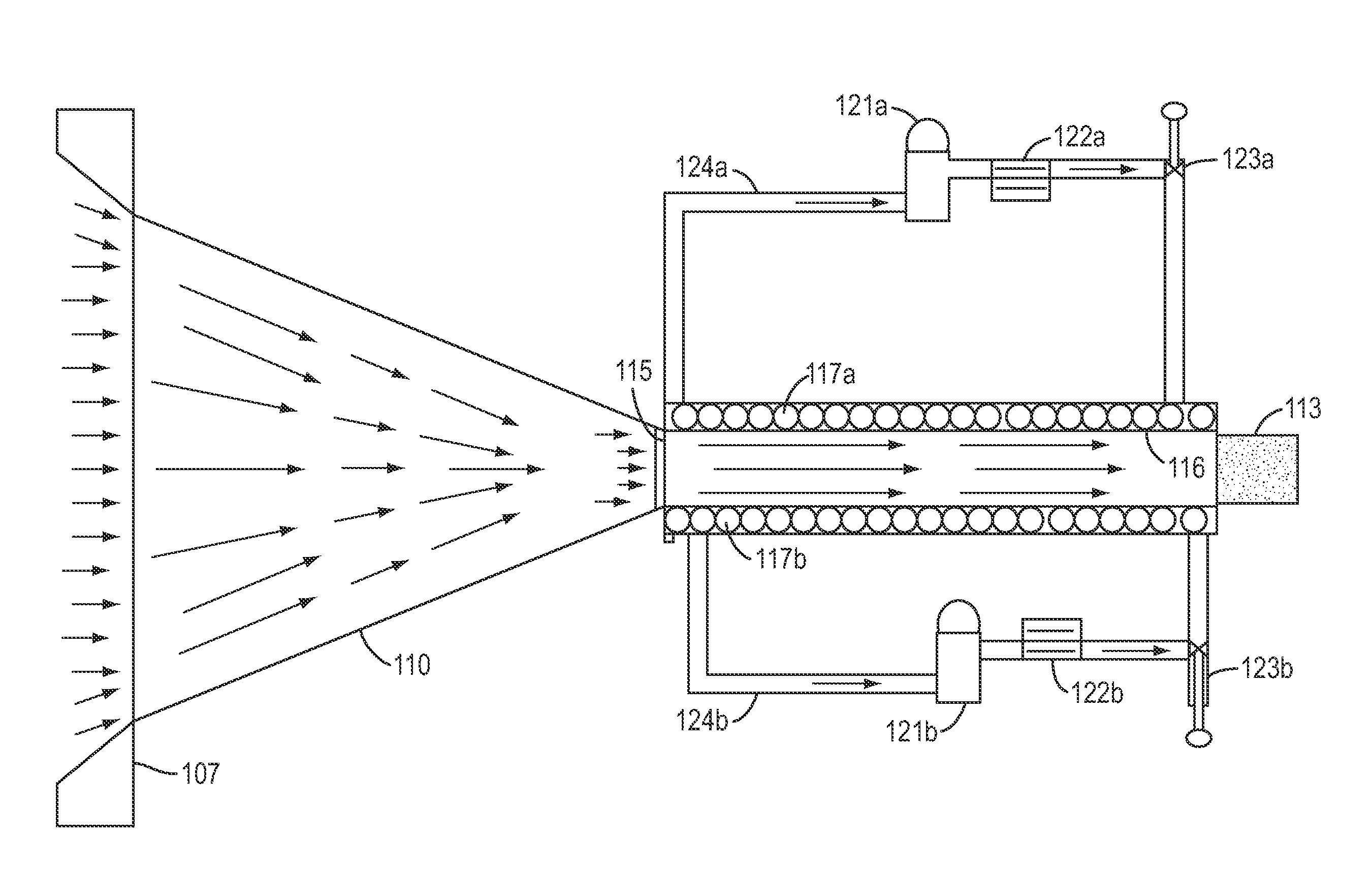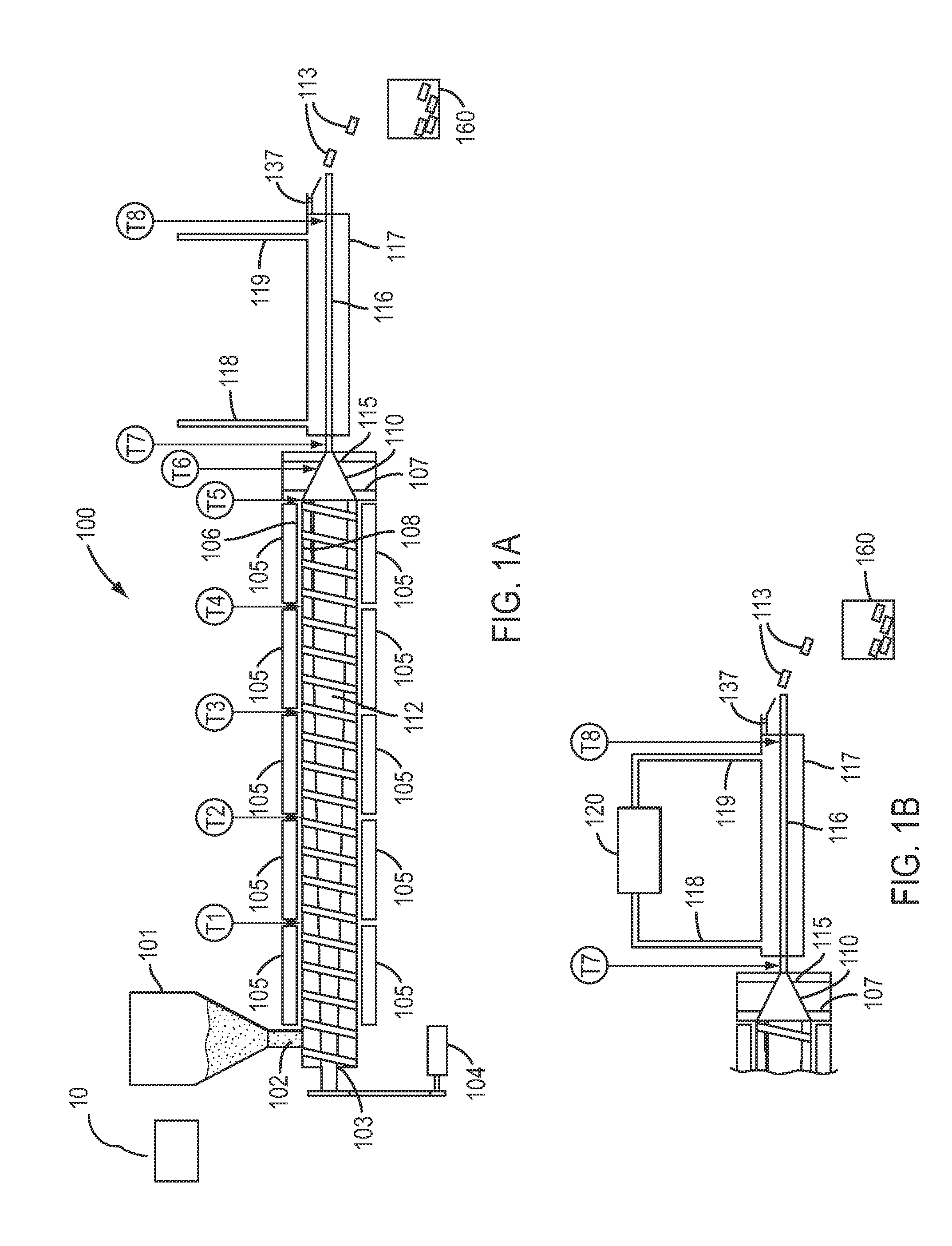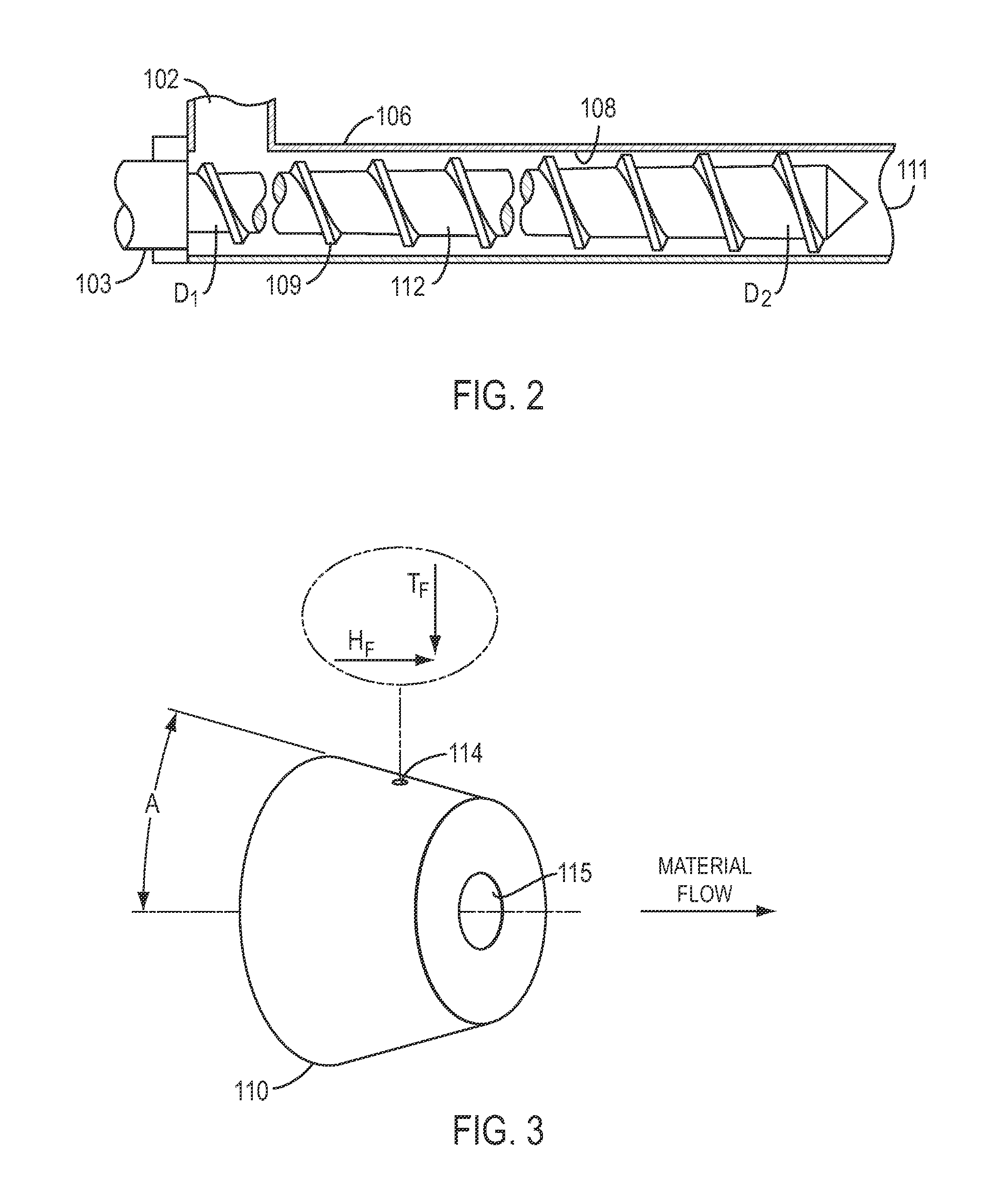Distiller grain pellet production devices
a technology of production device and distillation machine, which is applied in the direction of butter production, drying solid materials, drying machines, etc., can solve the problems of inability to extend inability to prolong the storage life of wet grains, and inability to prolong the storage life of dry grains
- Summary
- Abstract
- Description
- Claims
- Application Information
AI Technical Summary
Benefits of technology
Problems solved by technology
Method used
Image
Examples
Embodiment Construction
[0031]Reference will now be made to various embodiments, examples of which are illustrated in the accompanying drawings. However, these various exemplary embodiments are not intended to limit the disclosure. On the contrary, the disclosure is intended to cover alternatives, modifications, and equivalents.
[0032]Throughout the application, description of various embodiments may use “comprising” language; however, it will be understood by one of skill in the art, that in some specific instances, an embodiment can alternatively be described using the language “consisting essentially of” or “consisting of.”
[0033]For purposes of better understanding the present teachings and in no way limiting the scope of the teachings, it will be clear to one of skill the art that the use of the singular includes the plural unless specifically stated otherwise. Therefore, the terms “a,”“an” and “at least one” are used interchangeably in this application.
[0034]Unless otherwise indicated, all numbers expr...
PUM
| Property | Measurement | Unit |
|---|---|---|
| Temperature | aaaaa | aaaaa |
| Pressure | aaaaa | aaaaa |
| Length | aaaaa | aaaaa |
Abstract
Description
Claims
Application Information
 Login to View More
Login to View More - R&D
- Intellectual Property
- Life Sciences
- Materials
- Tech Scout
- Unparalleled Data Quality
- Higher Quality Content
- 60% Fewer Hallucinations
Browse by: Latest US Patents, China's latest patents, Technical Efficacy Thesaurus, Application Domain, Technology Topic, Popular Technical Reports.
© 2025 PatSnap. All rights reserved.Legal|Privacy policy|Modern Slavery Act Transparency Statement|Sitemap|About US| Contact US: help@patsnap.com



